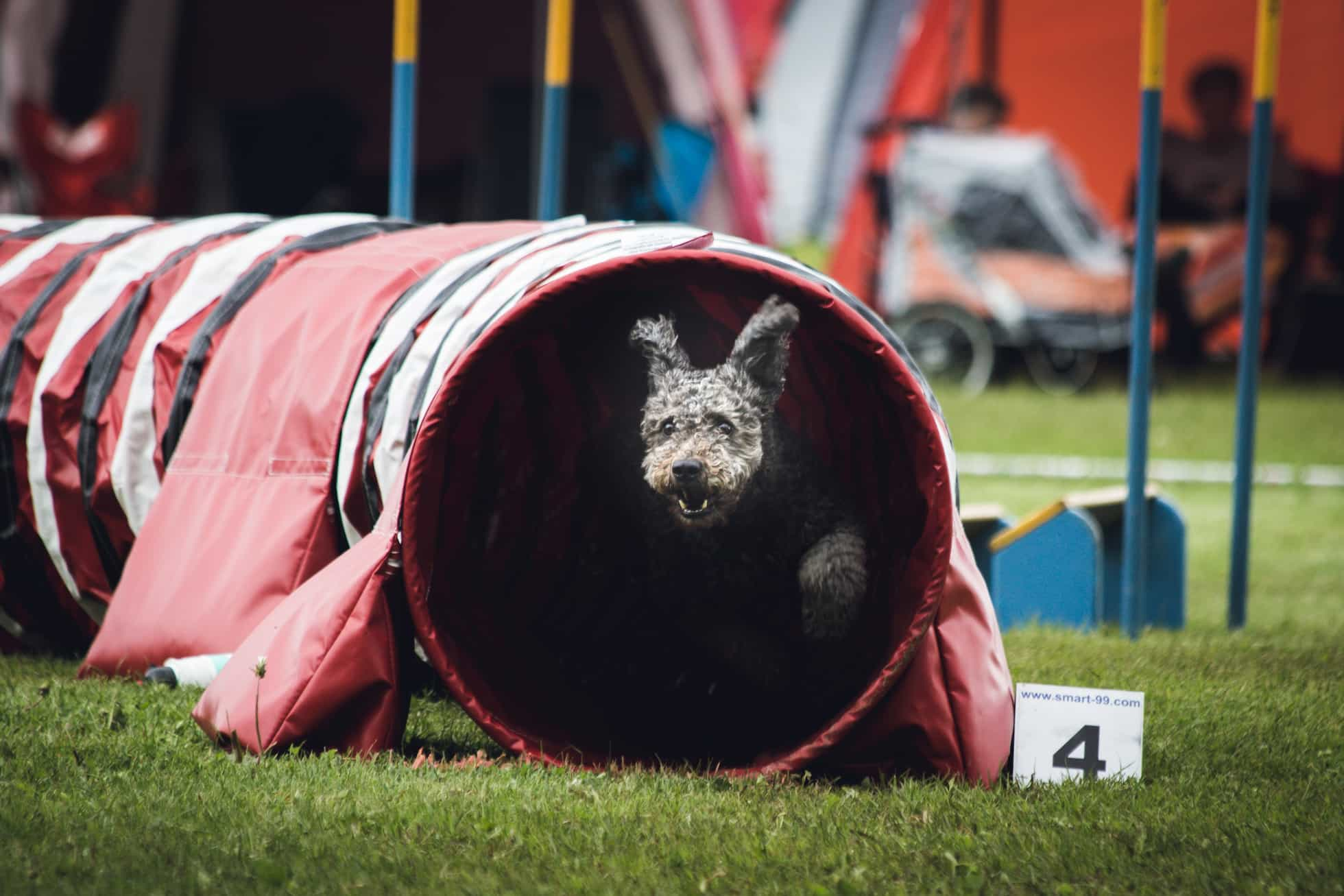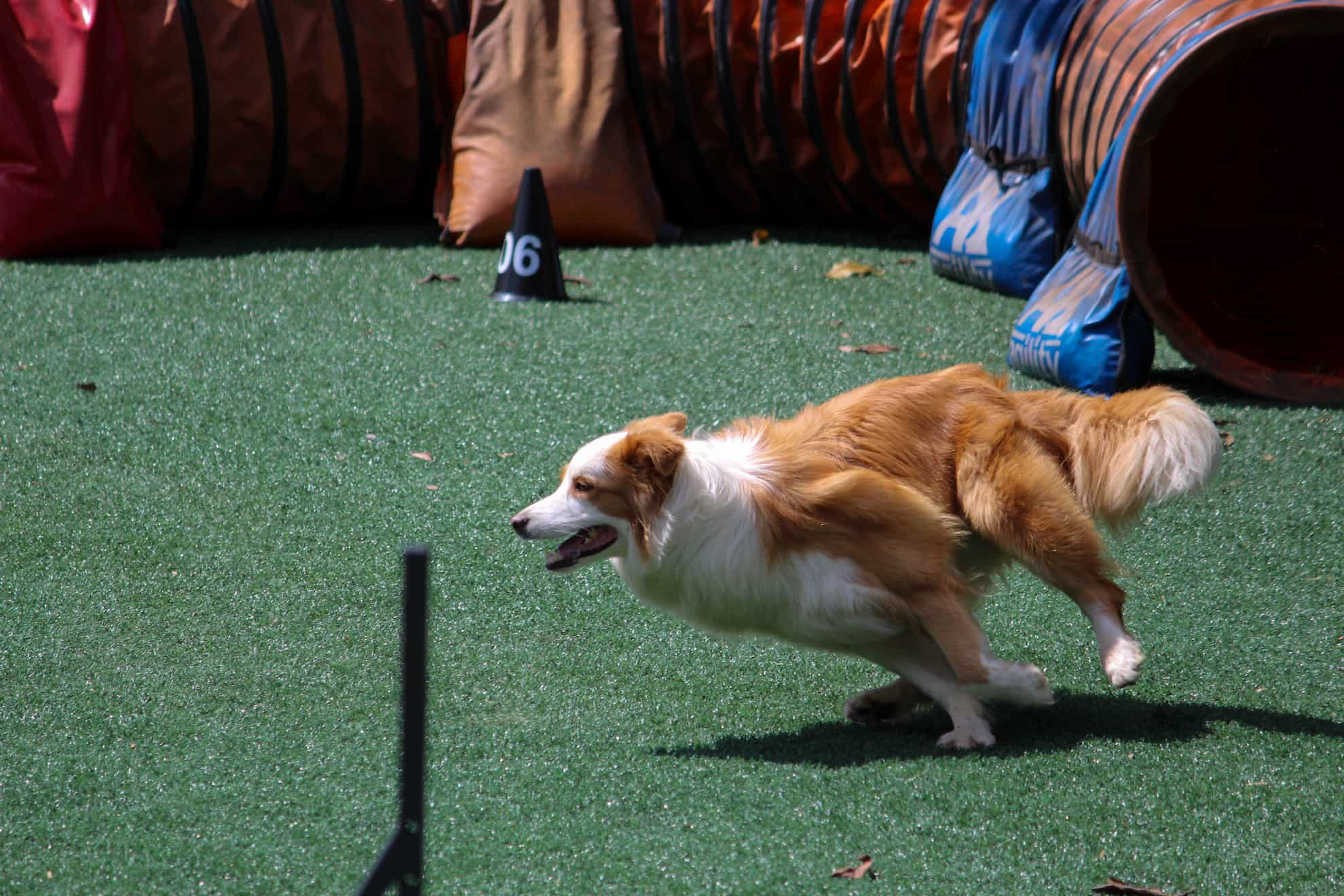Table of Contents
Brain Training | Positive Reinforcement | Clicker Training | Obedience Classes | Agility Courses | Scent Work | Things Never to Do
Summary:
Training your dog can be a daunting task. It's important to choose the right type of training for your pup as it will determine their behavior and how well they respond to commands. Whether you're looking to teach basic obedience or more advanced tricks, there are a variety of specific types of dog training available. We'll review some popular methods and discuss which one is best suited for your pooch - positive reinforcement, clicker training, obedience classes, agility courses, scent work, and more so that you can make an informed decision when selecting a method for your furry friend. So read on to learn all about different kinds of specific dog training and how each one works!

Brain Training
This method is often referred to as "cognitive" or "thinking" training. It involves teaching your dog to think through a problem and come up with the right solution instead of simply responding to commands. Brain training exercises generally involve puzzles that require your pup to use their nose, mouth, paws, and other body parts to find hidden treats or reach rewards. Make sure to read a brain training for dogs review to get the best course and guidance. This is an excellent way for older dogs with more developed brains to engage in mentally stimulating activities while still being able to learn new behaviors and skills.
Positive Reinforcement
A method based on reward-based learning that uses positive reinforcement in the form of treats, toys, verbal praise, petting, and social interaction for your pup to better understand their behavior will be rewarded and have the incentive to continue repeating it. This technique relies on associating desirable behavior with a reward and is considered one of the most effective ways of teaching dogs how to obey commands and stay focused. This method follows three specific steps:
- Present the desired behavior
- Reward the desired behavior
- Repeat the process until the desired behavior is mastered
When your pup does something wrong, it's important to not use negative reinforcement such as scolding or punishing them to ensure that they don't associate bad feelings with good ones - this could create a fear-based relationship between you and your pup instead of one of trust. Positive reinforcement should be used for all behaviors, both good and bad so that your pup understands what is expected from them. It may take several repetitions before a desired behavior can be successfully instilled in your pet - however if done correctly and consistently enough, positive reinforcement will eventually lead to desirable results.
Clicker Training
This method uses a small, handheld device known as a "clicker" to mark desired behaviors that your pup has completed correctly. It's a great way for new owners to get started in training their fur babies as it allows them to communicate quickly and effectively with their pup while still providing positive reinforcement when they complete an action. Clicker training can be used in combination with other methods (such as positive reinforcement) or alone, depending on the goals you're trying to achieve with your doggy.
Obedience Classes
Obedience classes are a great way for new owners to learn the basics of training their pup, from basic commands such as sit, stay, and come to more complex behaviors. Classes provide hands-on instruction from a professional trainer who can provide guidance and feedback while your dog practices in an environment with other dogs. This is also a great opportunity for you to get tips on teaching specific behaviors or troubleshooting issues that may arise during the course. Some classes will also cover topics such as canine body language and proper management to help ensure your pup is learning positively and safely.
Agility Courses
These courses challenge your pup's physical abilities by having them navigate through obstacle courses with tunnels, ramps, weave poles, jumps, and more. Not only does this help improve their agility but it also provides mental stimulation and develops problem-solving skills. Agility courses can be a fun way to bond with your dog while building their confidence and trust. This method is more beneficial for dogs that are already used to being around people and other animals as it can be distracting to a dog who has not yet been properly socialized. Before starting any agility course, it's important to make sure your pup is in good physical health and has no underlying conditions that could be aggravated by the activity.
Scent Work
This type of training involves teaching your pup to use their sense of smell to find hidden objects or distinguish between different smells. The goal is for your pup to be able to follow a trail or detect certain odors to complete tasks such as searching for specific items, finding people that are lost, or locating drugs or explosives. This is an excellent way for dogs who have an affinity for sniffing out new and interesting things to exercise their natural talents. For example, some breeds are known for their exceptional noses, such as German Shepherds and Beagles.
Things to Never Do
It's important to remember that when training your pup, certain methods should never be used as they can create fear-based relationships and cause lasting psychological damage.
- Physical punishment or yelling at your pup - this will only instill fear in them and can lead to aggressive behaviors
- Force them into situations where they may feel uncomfortable or scared - this can cause long-term emotional issues
- Reward bad behaviors - if you give your pup attention when they do something wrong, it will only reinforce that behavior
- Rely on punishment alone - this method of training is outdated and not effective in instilling good habits.

There are a variety of training methods that you can use to ensure your pup is well-behaved and obedient. From clicker training and obedience classes to agility courses and scent work, there's something for every pup out there. However, it's important to remember the things that should never be done when training to maintain a healthy relationship with your furry friend. So, take the time to explore different training methods and find what works best for you and your pup!
